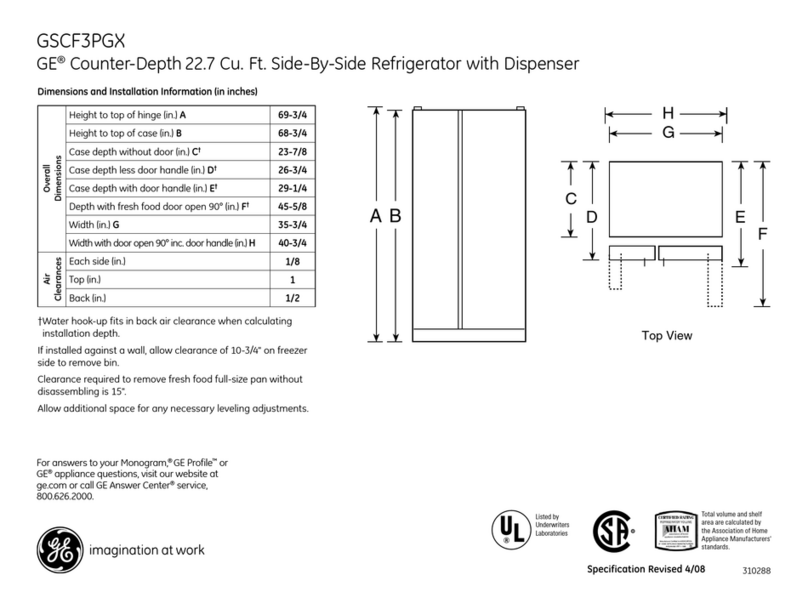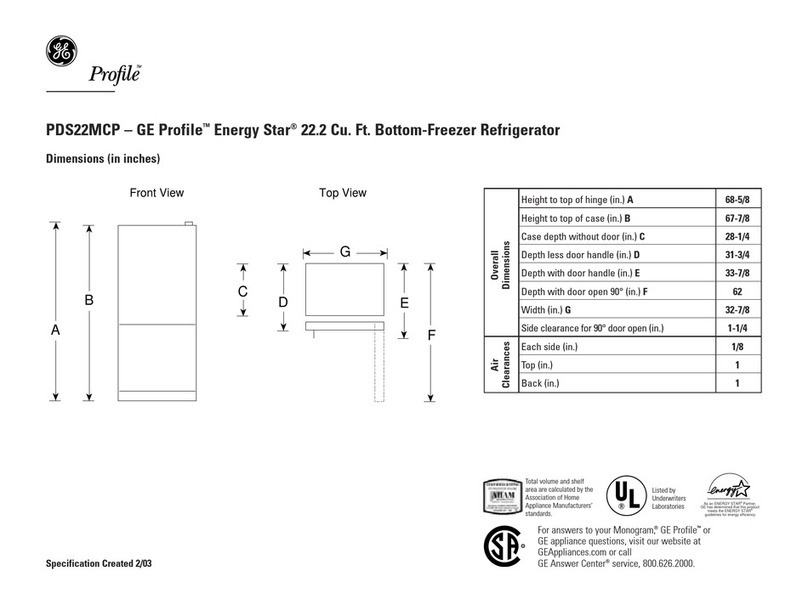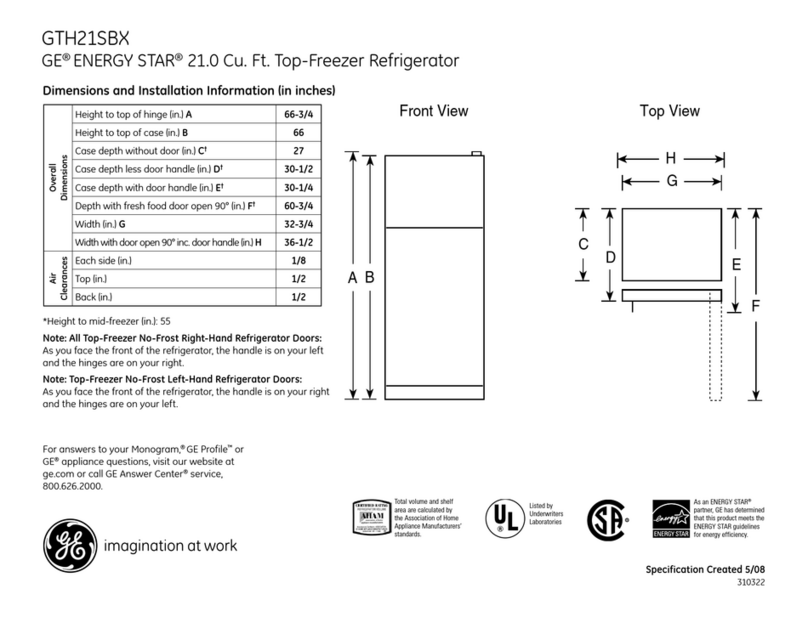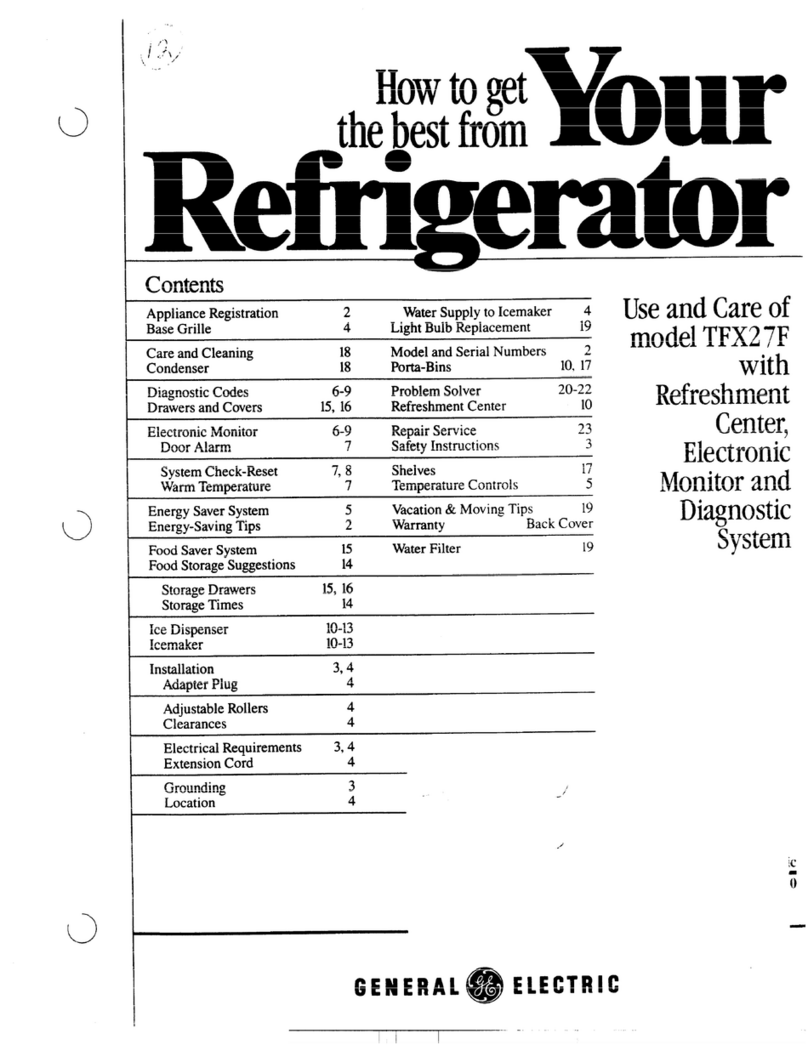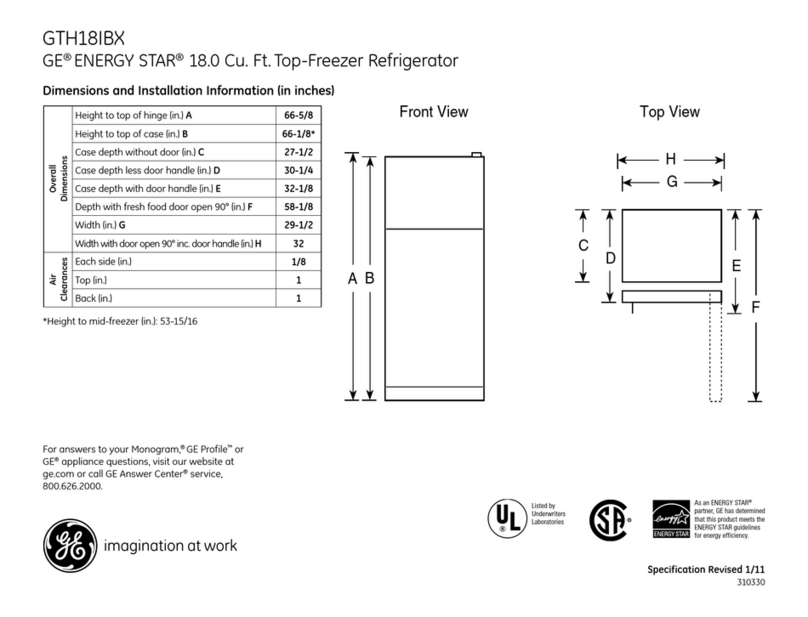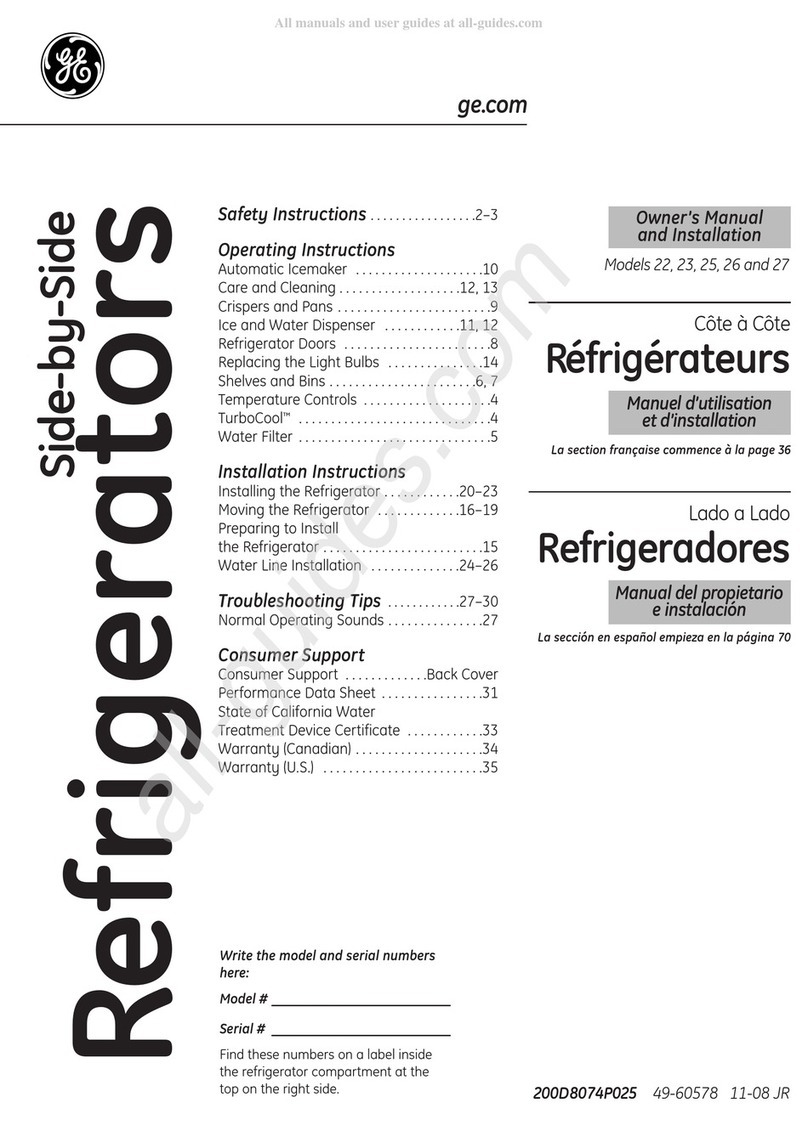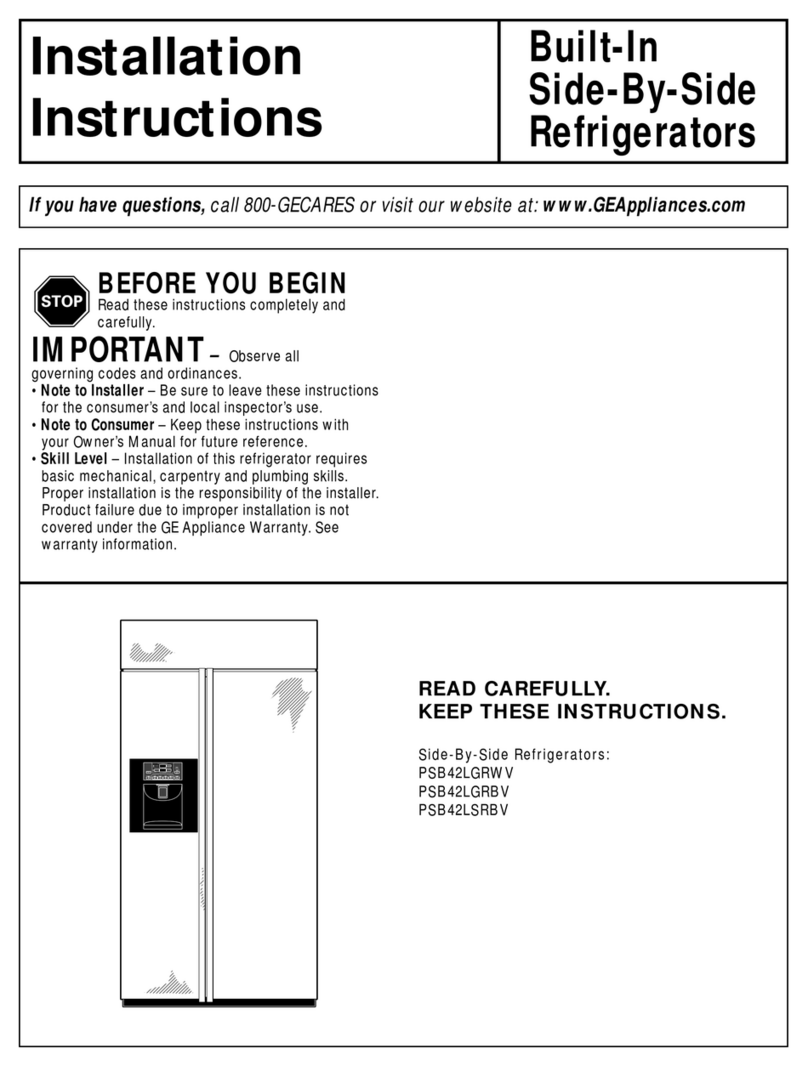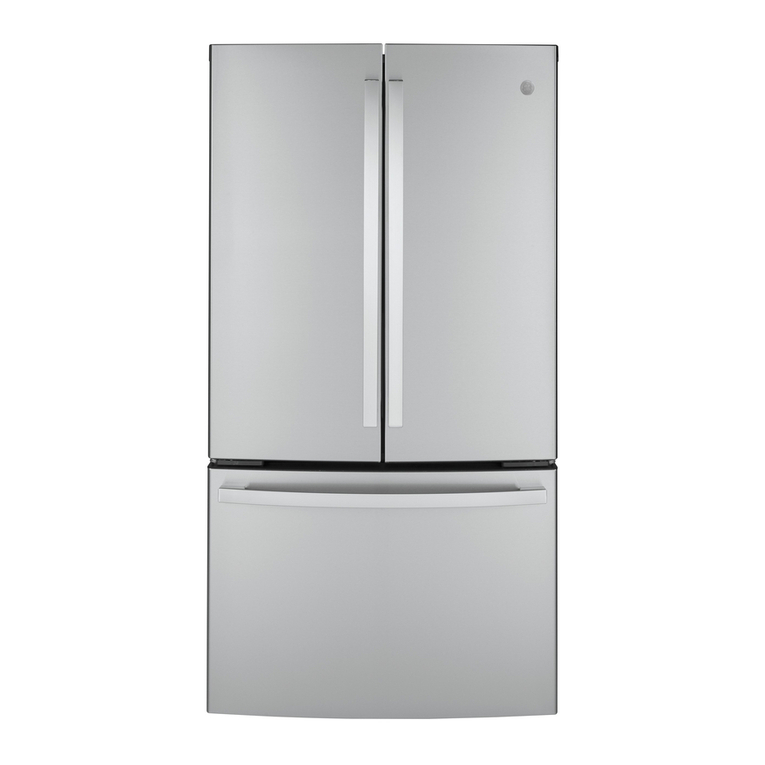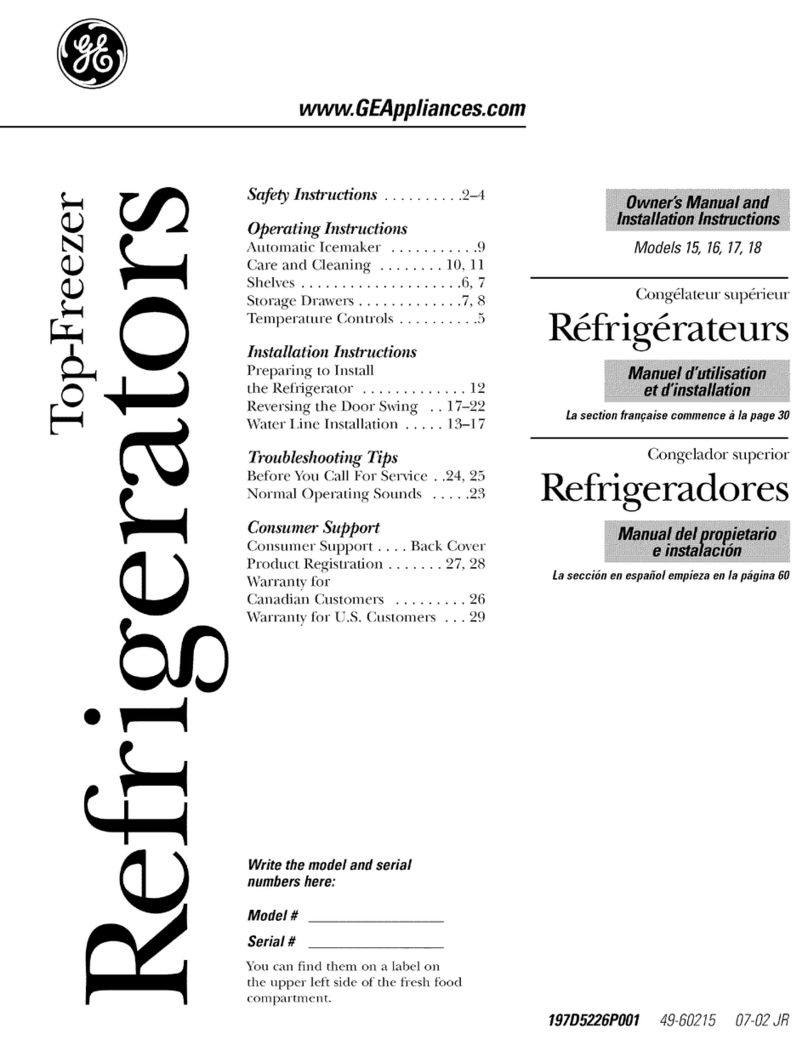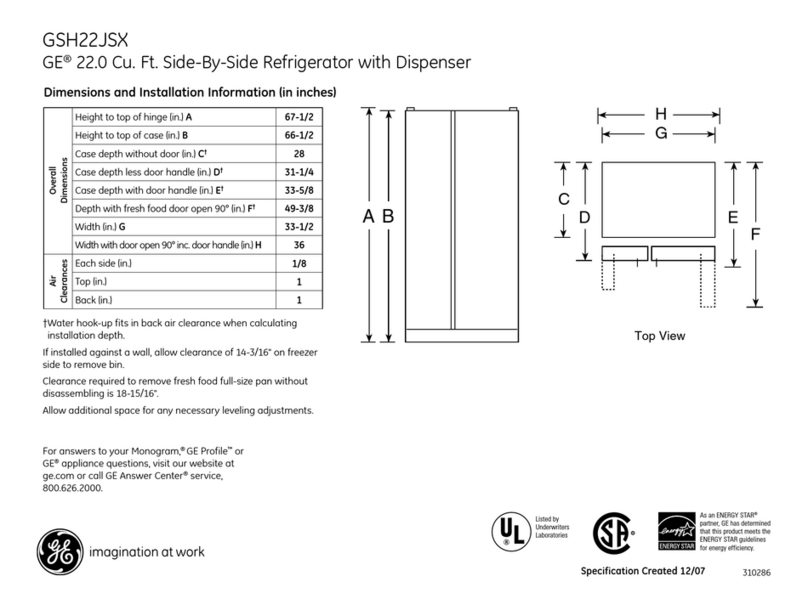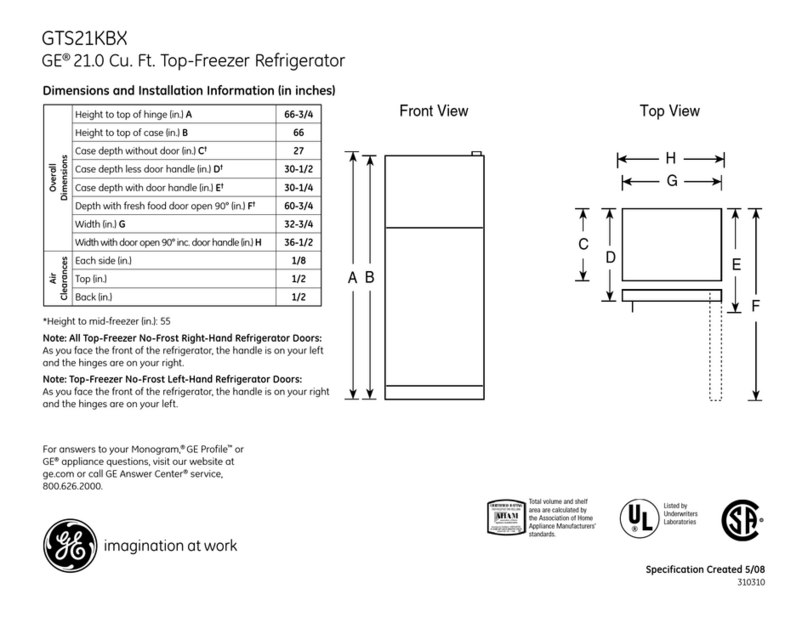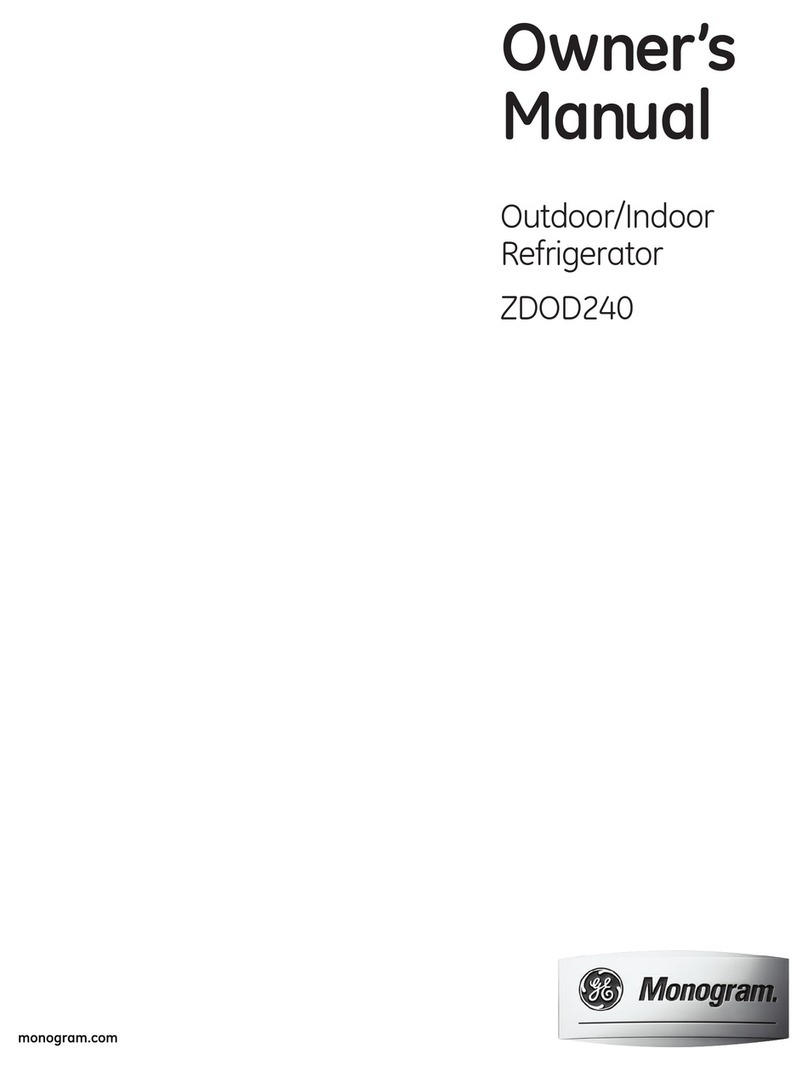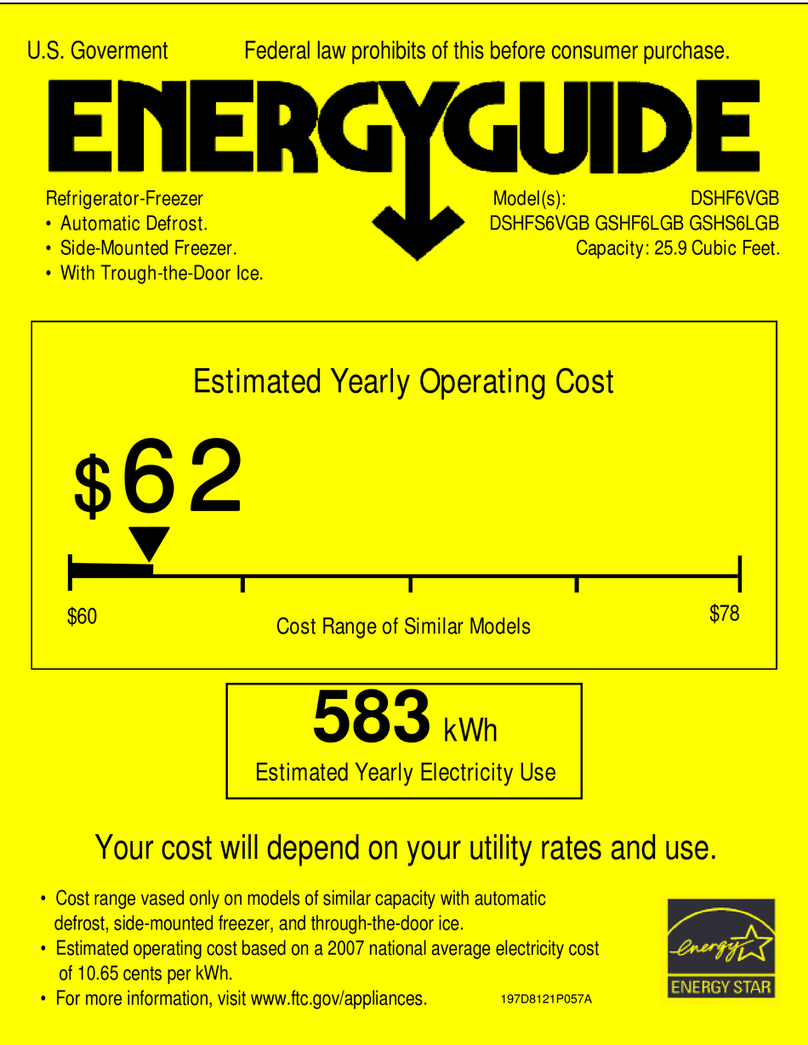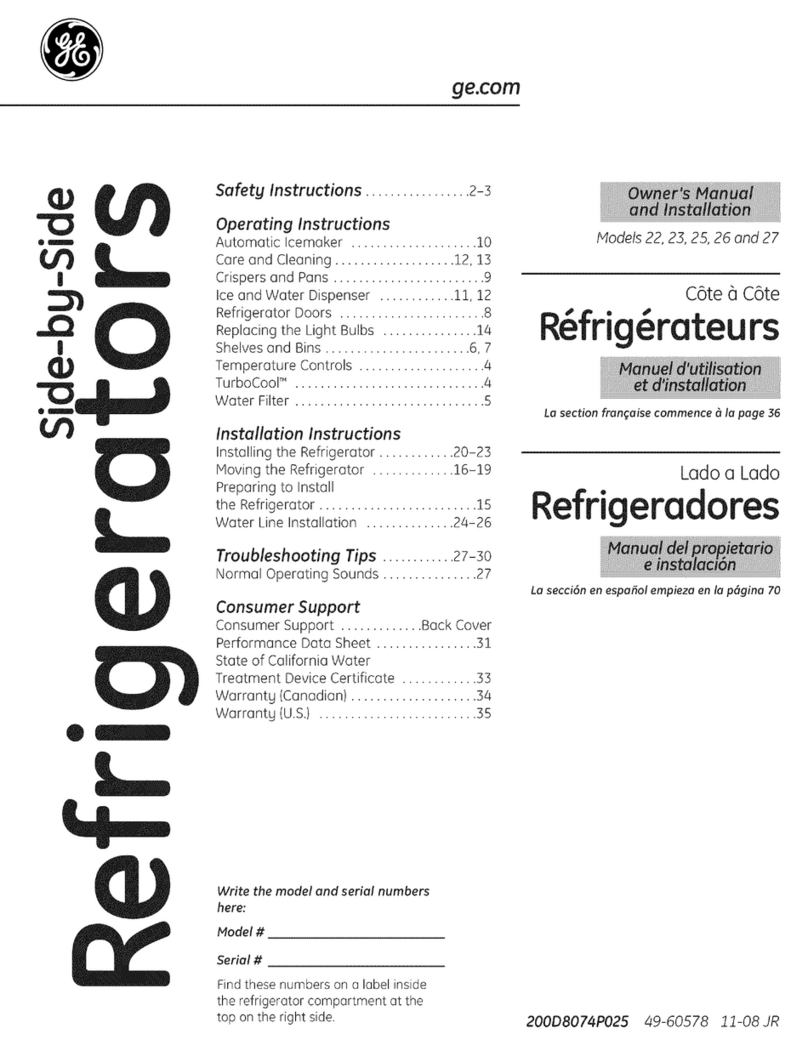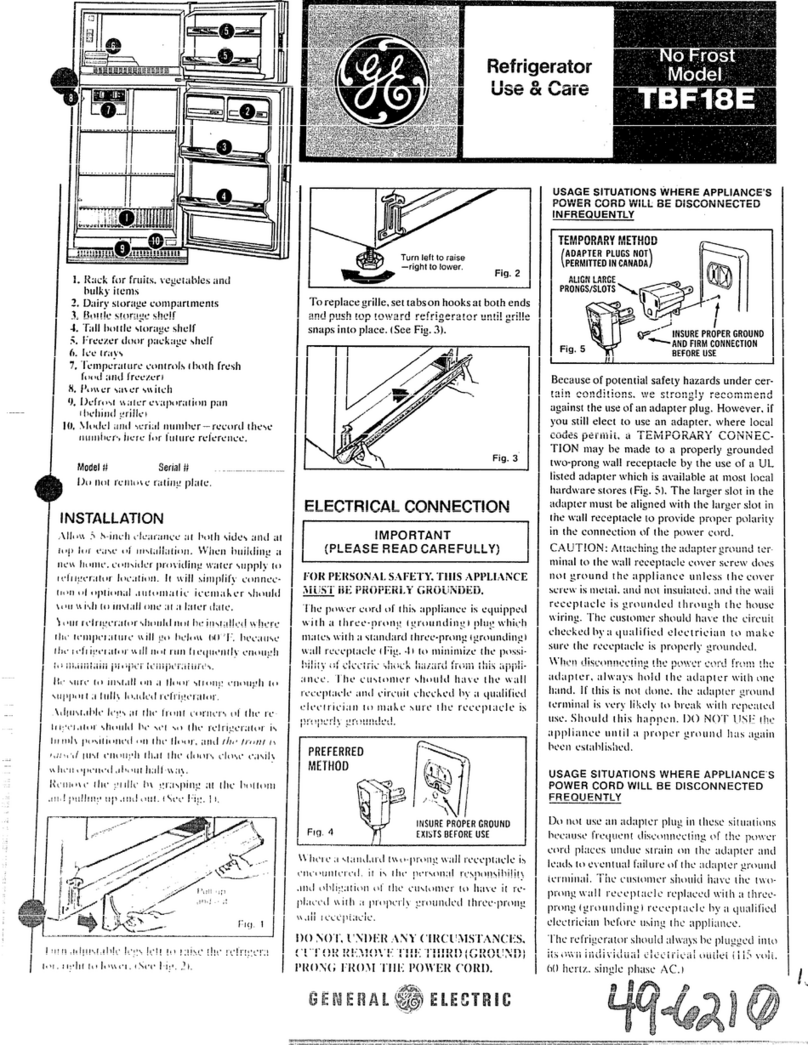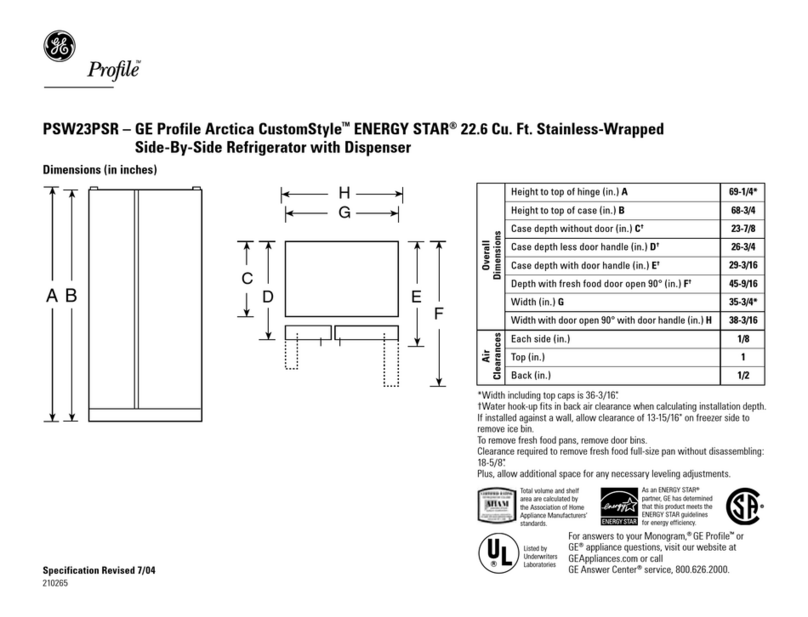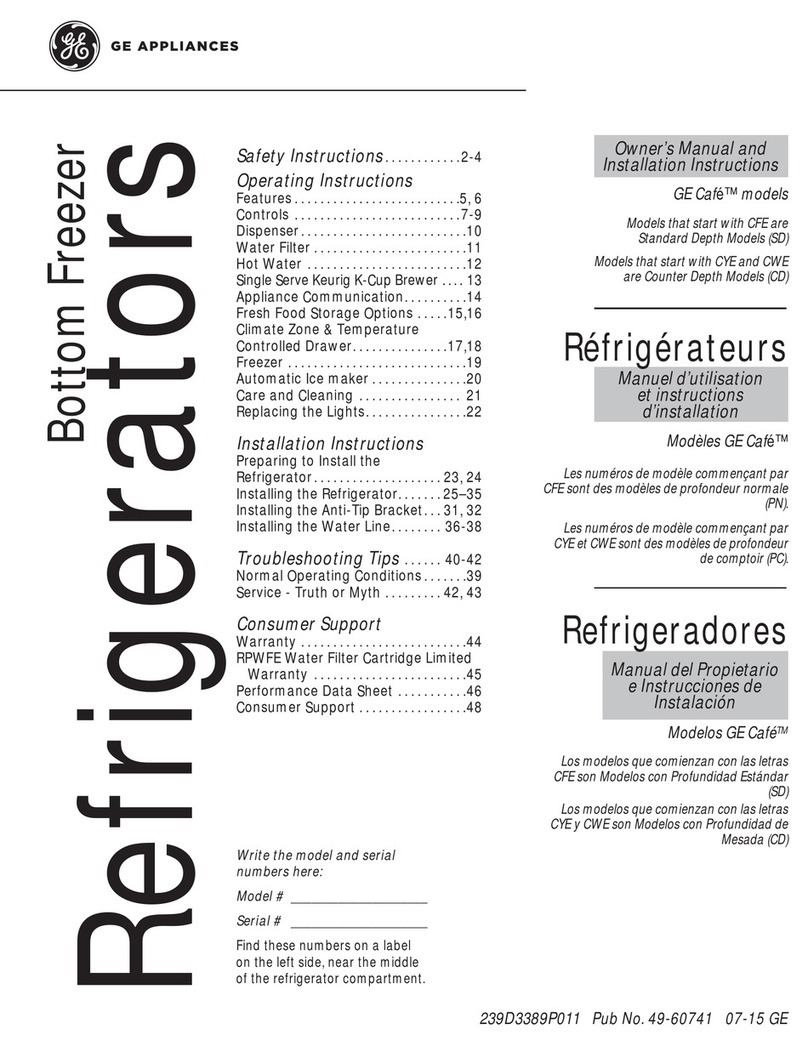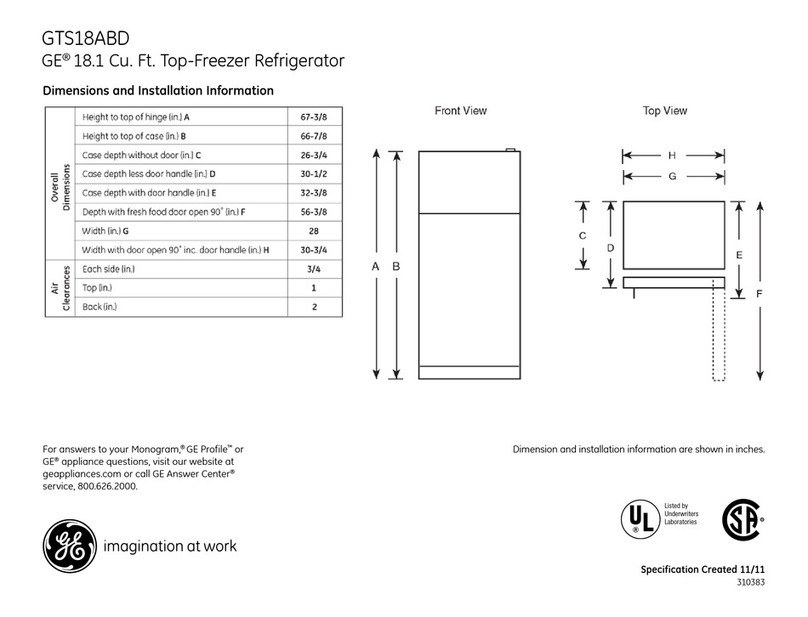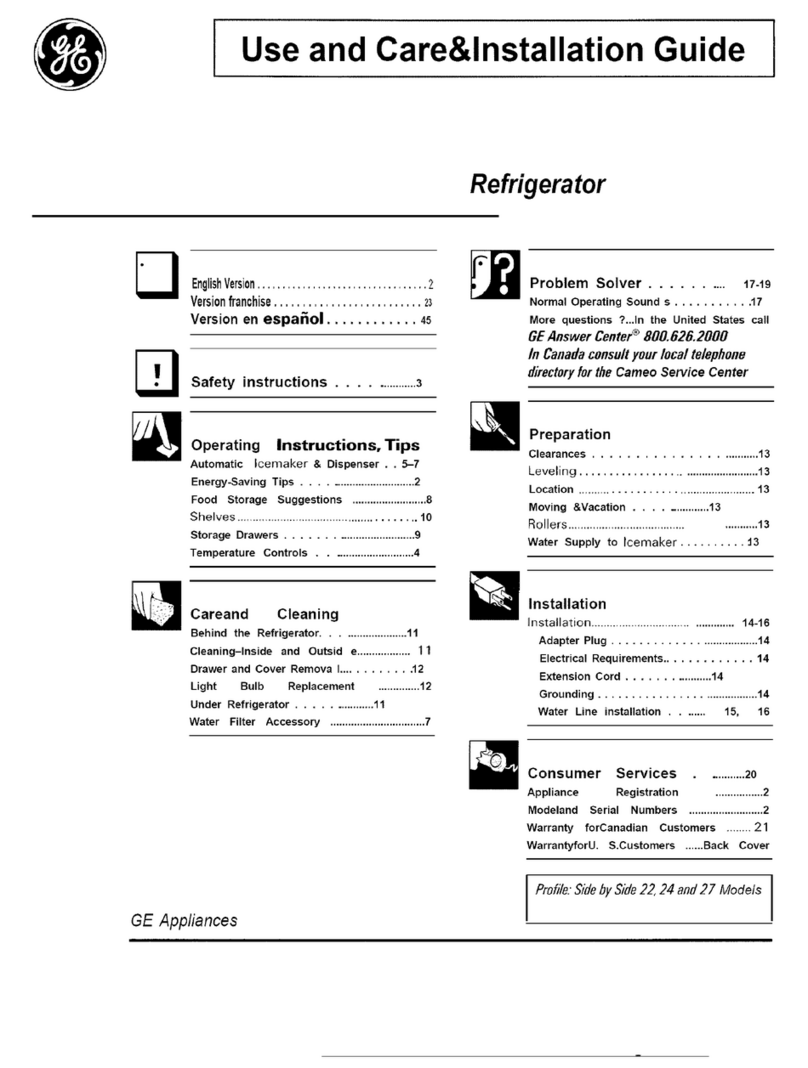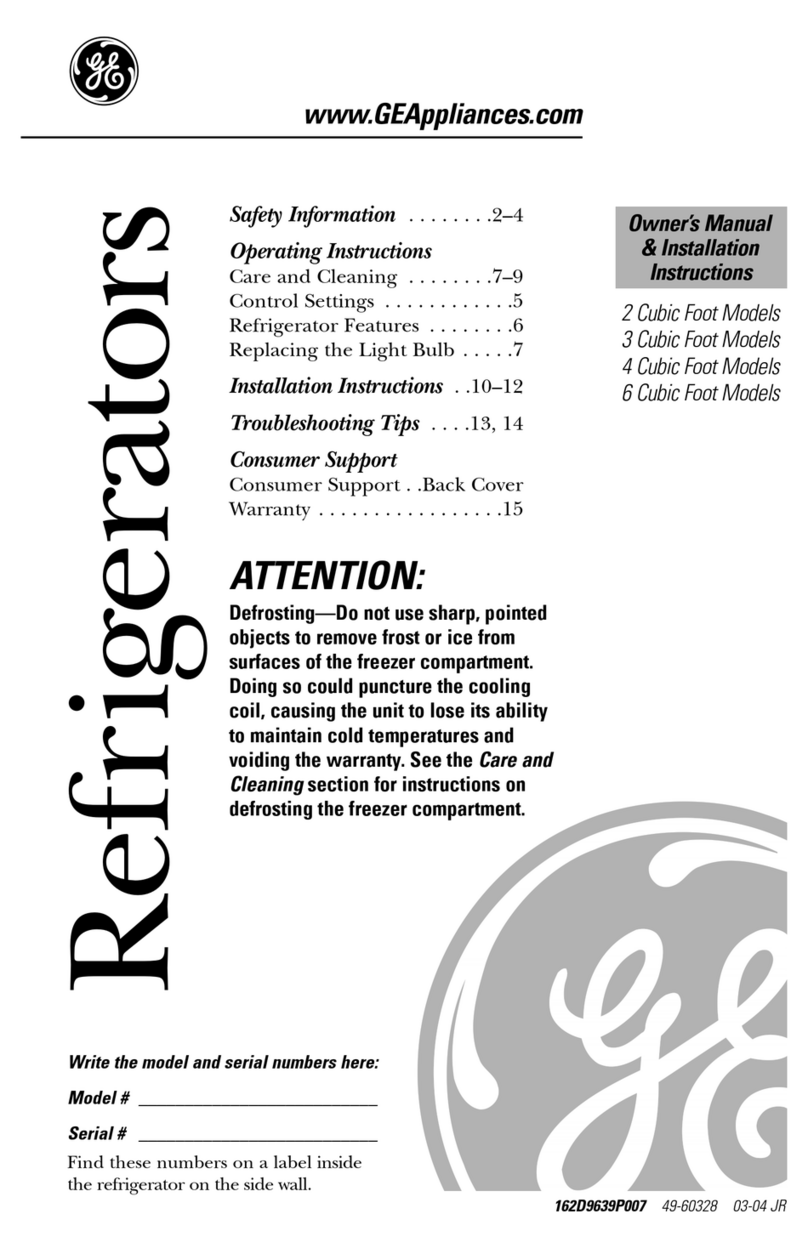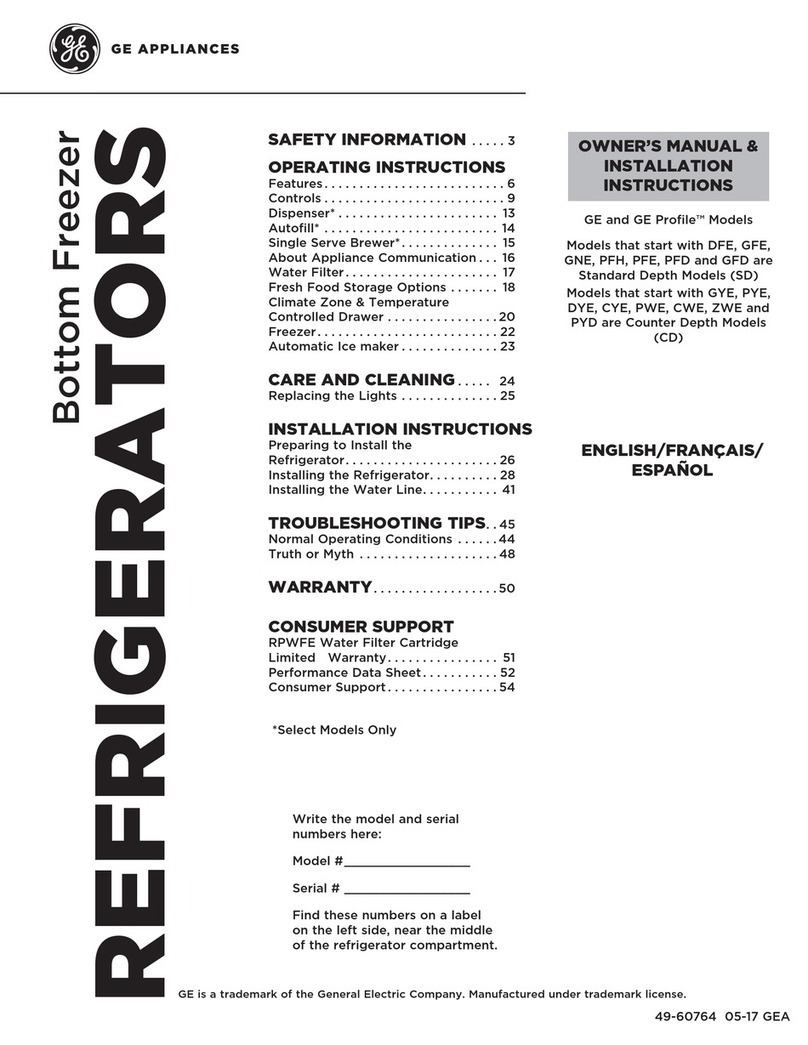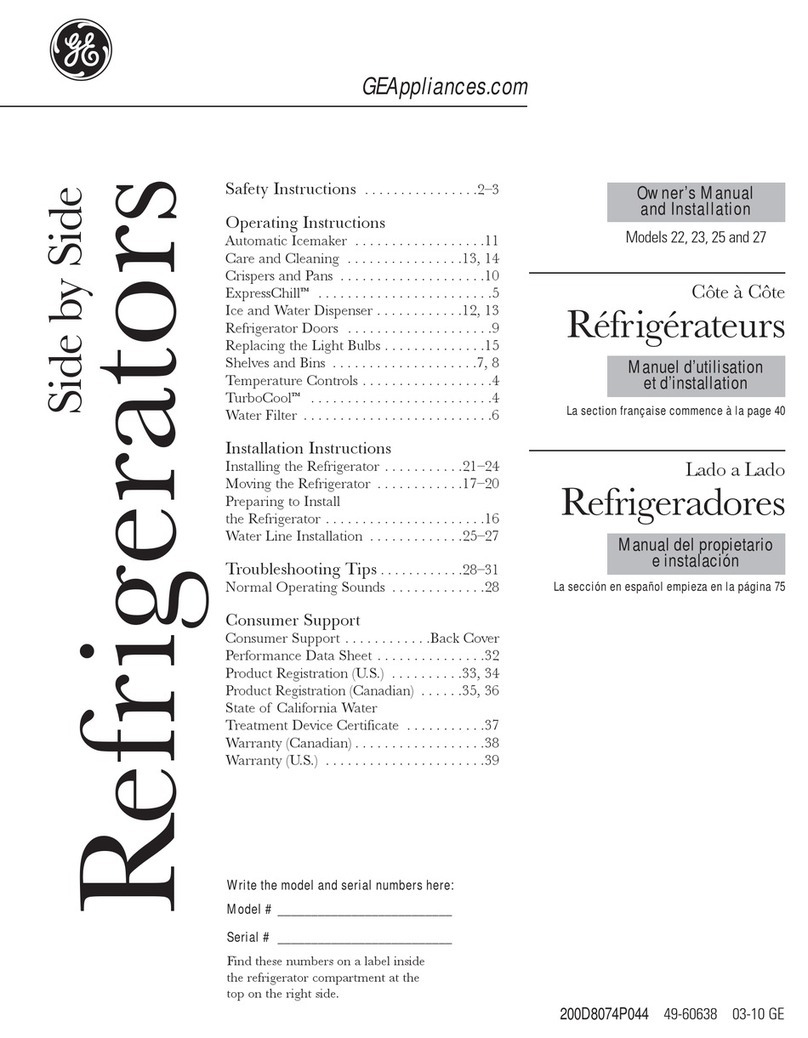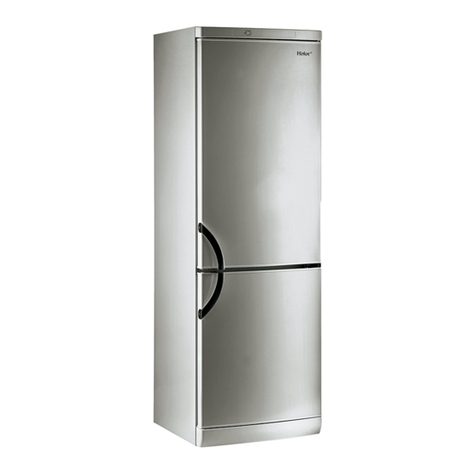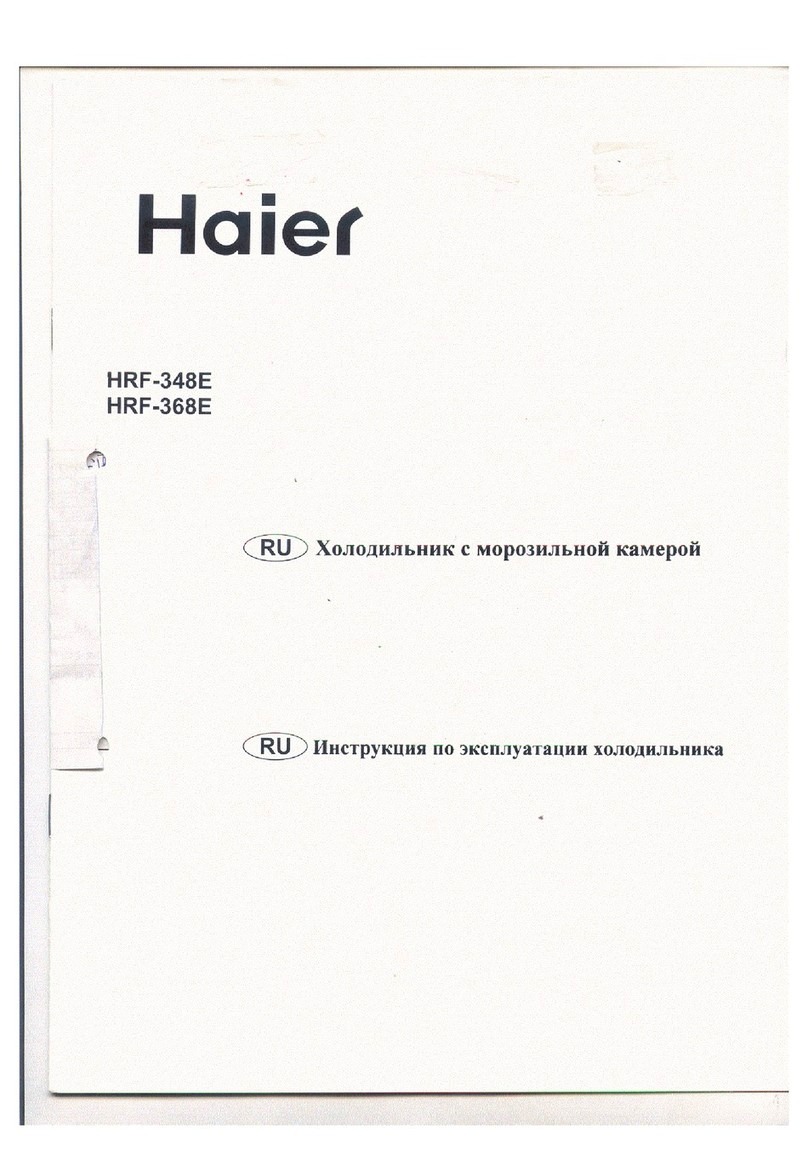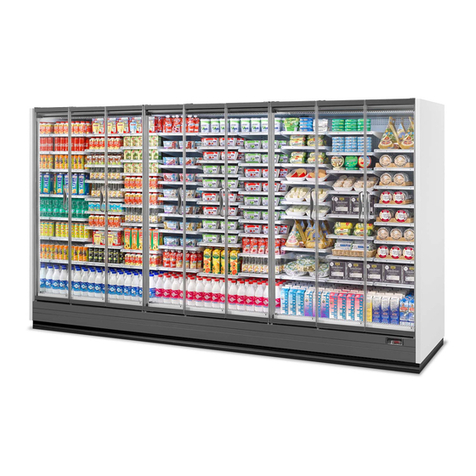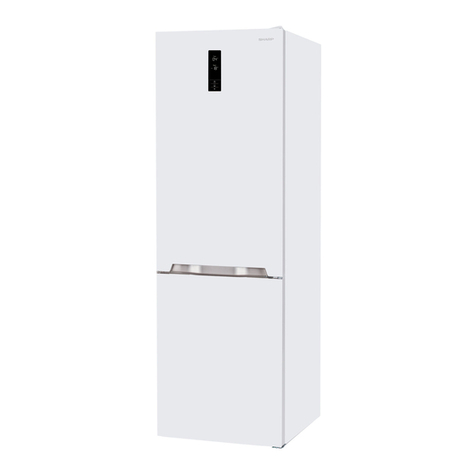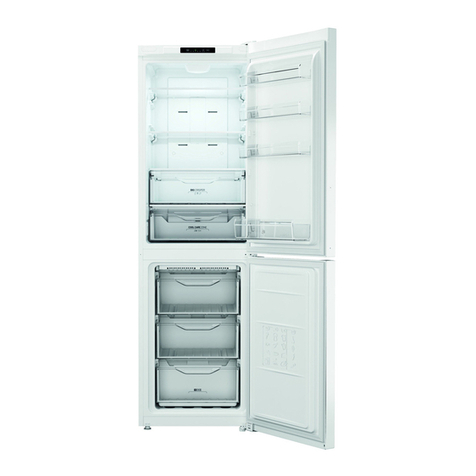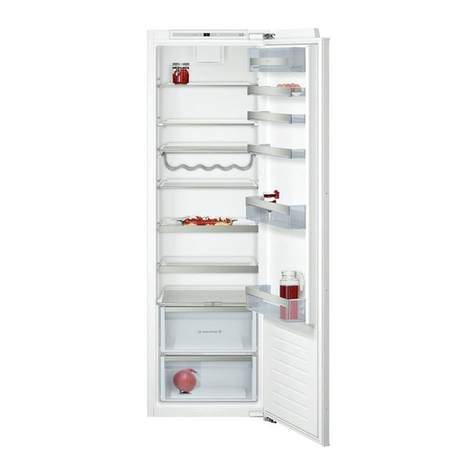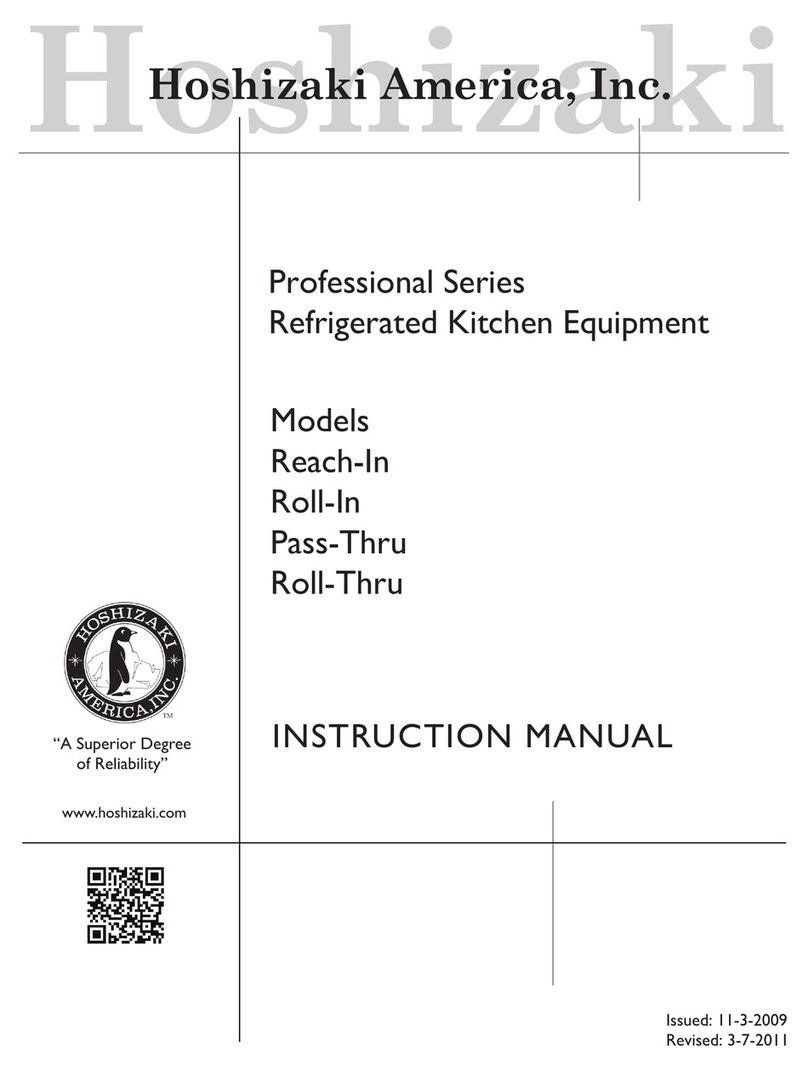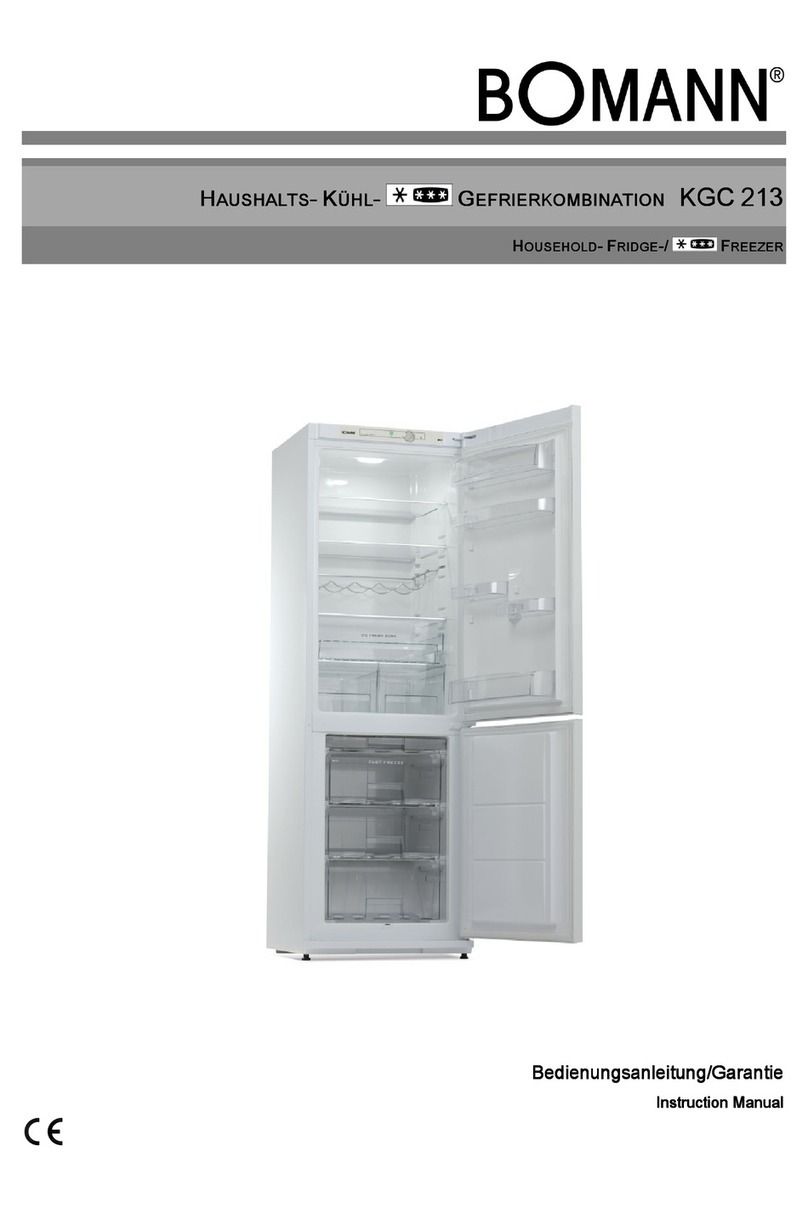Dnstan ation Requirements (continued) --_MPORTANT... Please Read CarefuBy
Use of adapter plug
Because of potential safety hazards
under certain conditions, we strongly
recommend against use of an adapter
plug However, ifyou still elect to use
an adapter, where local codes permit,
aTEMPORARYCONNECTION may
be made to a properly grounded
two-prong wall receptacle by use of
a UL listed adapter (Fig, 2) available
at most local hardware stores,
TEMPORARYMETHOD
(ADAPTERPLUGSNOT
PERMITTEDINCANADA) _--"'_' \"
ALIGNLARGE _j
PRONGS/SLOTS_ _ /
_'_ [F_-..I"'I;INSUREPROPER
¼"_ II _-- GROUNDAND
_FIRMCONNECTION
Fig2 r l BEFOREUSE
The larger slot in the adapter must be
aligned with the larger slot in the wall
receptacle to provide proper polarity
in the connection of the power cord
CAUTION: Attaching adapter
ground terminal to wall receptacle
cover screw does not ground the
appliance unless cover screw is
metal, and not insulated, and wall
receptacle is grounded through
house wiring Customer should
have the circuit checked by a qual-
ified electrician to make sure the
receptacle is properly grounded
When disconnecting the power
cord from the adapter, always hold
the adapter with one hand If this
is not done, the adapter ground
terminal is very likely to break
with repeated use
Should the adapter ground
terminal break, DO NOT USE the
appliance until a proper ground
has again been established.
Use of extension cords
Because of potential safety hazards
under certai n cond itions, we strongly
recommend against the use of an
extension cord However, ifyou still
elect to use an extension cord, it is
absolutely necessary that it be a
UL listed 3-wire grounding type
appliance extension cord having a
grounding type plug and outlet and
that the electrical rating of the cord
be 15 amperes {minimum) and 120
volts, Such extension cords are
obtainable through your local
service organization
The refrigerator should always
be plugged into its own
individual electrical outlet--
(t15 volt, 60 Hertz, single phase
AC) This is recommended for best
performance and to prevent over-
loading house wiring circuits, which
could cause a possible fire hazard
from overheating wires,
Refrigerator Unstan ation
Location
Do not install refrigerator where
temperature will go below 60°t=.
because it will not run often enough
to maintain proper temperatures
Do install it on a floor strong enough
to support a fully loaded refrigerator.
Also see Energy-Saving Tips
regarding location
Cgearanoes
Allow 5/8" at each side, 1" over top,
and 1"at rear for ease of installation,
proper air circulation, plumbing and
electrical connections,, Allow 3/4"
at each side for door clearance°
Water Supply
There should be sufficient tubing
for the icemaker from the cold
water supply to allow you to move
the refrigerator out from the walt
several feet (approximately 3 coils
of 1/4-inch copper tubing that mea-
sure at least 10 inches in diameter)
Rollers
Adjustable rollers, which enable
you to move your refrigerator away
from the wall for cleaning, are
located behind the base grille
These rollers should be set so that
the refrigerator is firmly positioned
on the floor and the front is raised
just enough that the doors close
easily when Opened about halfway
Specially designed door hinges lift
both doors slightly when opened,
The force of gravity then helps
close the doors automatically,
PULLOUT
To adjust rollers, remove the base
grille by grasping it at the bottom
and pulling it out
Turn miler adjusting screws clock-
wise to raise refrigerator, counter-
clockwiseto lower it Use adjustable
wrench (3/8" hex head bolt) or pliers
When adjusting front rollers for
proper door closure, it is recom-
mended that the bottom front edge
of the cabinet be approximately
5/8 inch from the floor_
To replace base grille, align prongs
on back of grille with clamps in
cabinet and push forward until grille
snaps into place
4
